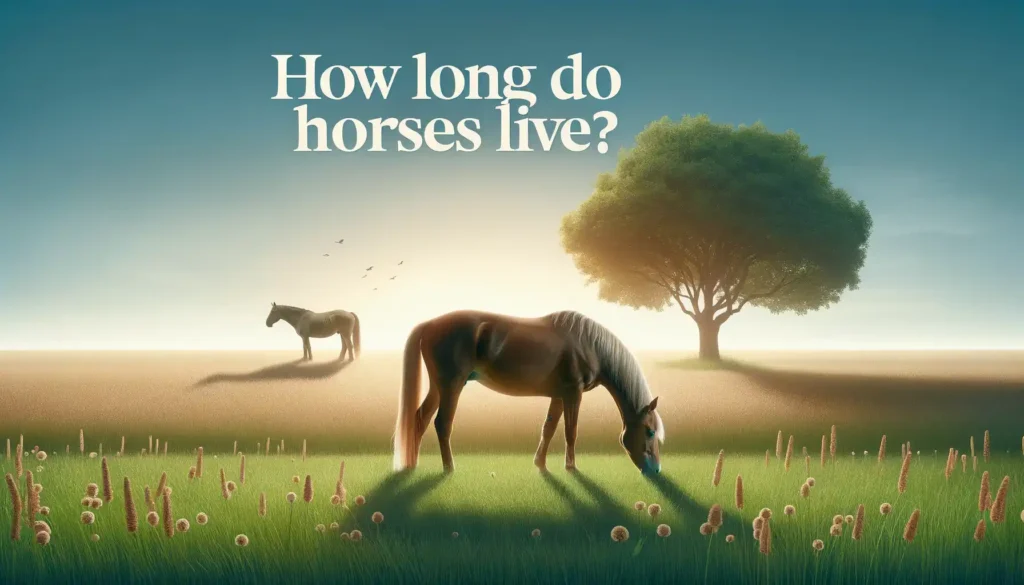The average lifespan of a dog depends on many factors. From the tiny Chihuahua to the towering Great Dane, dogs come in all shapes and sizes. And their longevity correlates closely with their stature. The average small dog lives 10-15 years, while large breeds typically live 8-12 years.
But size is only part of the equation. Breed, genetics, diet, exercise, neutering, environment, and veterinary care all influence how long a dog will live. Some breeds like Border Collies and Australian Cattle Dogs often reach 15+ years, while other breeds like Bernese Mountain Dogs tend to have shorter lives of 6-8 years.
In this blog post, we’ll explore the intriguing factors that determine the average lifespan of a dog. We’ll also provide tips on how to maximize your precious years with your pup. Let’s dig into the details!
Skip to Topic
The average lifespan of a dog

The average lifespan of a dog depends on many variables including size, breed, genetics, diet, exercise, and veterinary care. Small dogs generally live the longest, with average lifespans between 10-15 years.
Medium dogs typically live 10-13 years, while large breeds usually live 8-12 years. Factors like inbreeding versus crossbreeding, neutering, and environment also affect longevity.
Some breeds like Chihuahuas and Australian Cattle Dogs often exceed 15 years, while larger breeds like Great Danes tend to have shorter lifespans of 6-8 years. Regular vet checkups, balanced nutrition, exercise, and mental stimulation can help dogs live long, healthy lives.
Below is a table summarizing the average lifespan for some of the most popular dog breeds. The expected lifespan can vary depending on the individual dog, but these averages give a general indication of longevity across common breeds.
| Breed | Average Lifespan |
|---|---|
| Labrador Retriever | 10-12 years |
| German Shepherd | 9-13 years |
| Golden Retriever | 10-12 years |
| French Bulldog | 10-12 years |
| Bulldog | 8-10 years |
| Beagle | 12-15 years |
| Poodle | 12-15 years |
| Rottweiler | 9-10 years |
| Yorkshire Terrier | 13-16 years |
| German Shorthaired Pointer | 12-14 years |
| Boxer | 10-12 years |
| Siberian Husky | 12-14 years |
| Dachshund | 12-15 years |
| Australian Shepherd | 12-15 years |
| Great Dane | 7-10 years |
| Doberman Pinscher | 10-12 years |
| Cavalier King Charles Spaniel | 10-14 years |
| Miniature Schnauzer | 12-14 years |
| Shih Tzu | 10-16 years |
| Boston Terrier | 11-13 years |
| Pembroke Welsh Corgi | 12-13 years |
| Australian Cattle Dog | 12-14 years |
| English Cocker Spaniel | 12-15 years |
| Havanese | 14-16 years |
| Brittany | 12-14 years |
The table covers a wide range of popular breeds with varying expected lifespans. As before, proper care and genetics play a big role. But this gives a general overview of average longevity across many common breeds. The smallest breeds tend to live the longest, while the largest have shorter average lifespans.
Factors Influencing a Dog’s Lifespan

A dog’s lifespan is influenced by a variety of genetic, environmental, and care-related factors. While the average lifespan for dogs is 10-13 years, some breeds and individual dogs live significantly longer or shorter than the norm.
A dog’s longevity is determined by an interplay between its breed, size, nutrition, exercise, veterinary care, and home environment. Smaller dog breeds tend to live longer than larger breeds, with genetics, bone/joint health, and weight management playing key roles.
Providing nutritious food, appropriate exercise, routine veterinary care, and a loving home all contribute to optimizing a dog’s health and lifespan potential.
Efforts to enhance dogs’ wellbeing through conscientious breeding, preventative care, lifestyle management, and meeting their physical and emotional needs can extend lives by several years versus neglecting these factors.
Breed Size Matters
Smaller dog breeds tend to outlive larger breeds by years. A Chihuahua can live over 15 years while Great Danes live only 6-10 years typically. Small dogs reach adulthood faster, so their organs and tissues age more slowly.
Large breeds are prone to joint dysplasia, ligament tears, and bone diseases from their weight and activity levels, shortening their lifespan. Paying attention to a breed’s adult size projections provides insight into expected longevity.
- Smaller dogs age slower internally as they mature faster externally
- Large breeds susceptible to orthopedic injuries and degenerative bone diseases
- Weight and size predispose biggest breeds to joint/ligament damage
- Adult size forecasts lifespan – smaller breeds live longer
Genetics Play a Role
Certain breeds are vulnerable to inherited conditions like hip dysplasia, heart defects, cancers, and endocrine disorders that result in earlier mortality. Crossbreeding dogs amplifies hybrid vigor, decreasing the likelihood of genetic abnormalities.
Choosing purebreds from lines screened for health issues can help stack the deck for a longer life.
- Some purebreds prone to recessive conditions that are fatal
- Crossbreeding mixed dogs improves genetic diversity
- Screen breeding dogs for issues to reduce inherited illnesses
- Go for health-tested purebreds to minimize genetic risk
Nutrition Makes a Difference
Providing age-appropriate nutrition tailored for a dog’s size, activity level, and health status can add years to life. Obesity puts strain on organs and joints, often leading to arthritis, diabetes, and heart disease.
Consulting a vet helps determine optimal nutrition by life stage, activity, and breed size to avoid weight issues.
- Obesity leads to strain on organs and painful joint issues
- Life stage and breed specific food prevents unhealthy weight
- Veterinary consult on ideal diet for dog’s unique needs
- Monitor weight annually and adjust food accordingly
Preventative Veterinary Care
Regular vet visits for exams, vaccines, dental cleanings, screens catch issues early when most treatable. Routine parasite prevention maintains immunity by preventing infestations.
Prompt treatment for injuries and illnesses before they worsen saves lives. Annual bloodwork provides insight on internal health.
- Annual exams uncover issues when curable and manageable
- Vaccines prevent contagious and often fatal diseases
- Dental cleanings stop painful infections from spreading
- Early illness/injury treatment prevents chronic conditions
- Bloodwork indicates organ function and disease markers
Lifestyle Factors
Physical and mental exercise maintains health if tailored for breed, age, and ability. Excessive exercise stresses still-growing large breed puppies’ joints. Under-stimulation leads to boredom, obesity and behavior issues.
Optimizing activity levels and play prevents obesity and joint injuries while providing an outlet for natural behaviors.
- Puppy exercise must avoid too much pounding on still growing bones
- Insufficient activity leads to weight gain and behavioral problems
- Overexercise can damage joints in elderly or disabled dogs
- Optimal exercise balances activity with adequate rest
The Right Home Environment
Providing for a dog’s basic physical and social needs leads to improved lifespan. Access to fresh water, nutritious food, shelter, affection and veterinary care enables good health.
Positive reinforcement training establishes trust and controlled behaviors. Rehoming from neglectful situations to nurturing homes adds years to dogs’ lives.
- Meeting survival needs: nutrition, water, shelter, medicine
- Positive training strengthens human-animal bond
- Physical affection and attention improves emotional health
- Enrichment toys prevent destructive boredom behaviors
- Rehoming from bad environments extends lifespan
Extending Your Dog’s Lifespan
Extending your dog’s lifespan and ensuring they live a happy and healthy life is a top priority for most dog owners. While genetics play a significant role in a dog’s longevity, there are several steps you can take to help increase their chances of living a longer, healthier life:
Proper Nutrition: Feeding your dog a balanced diet that meets their specific nutritional needs is crucial. Consult with your veterinarian to determine the best type of food, portion sizes, and feeding schedule for your dog’s age, breed, and activity level.
Regular Exercise: Ensure your dog gets regular exercise to maintain a healthy weight and overall fitness. The amount and type of exercise will vary depending on your dog’s breed and age, so consult with your vet for recommendations.
Regular Veterinary Care: Schedule regular check-ups with your veterinarian. This allows for early detection and treatment of any health issues. Vaccinations, dental care, and preventive treatments for parasites are also essential components of veterinary care.
Maintain a Healthy Weight: Obesity can lead to various health problems in dogs, including joint issues and heart disease. Feed your dog the appropriate amount of food and engage in regular physical activity to help them maintain a healthy weight.
Mental Stimulation: Mental stimulation is just as important as physical exercise. Provide toys, puzzles, and games to keep your dog’s mind active and engaged.
Regular Grooming: Depending on your dog’s breed, regular grooming may be necessary to prevent skin problems, matting, and other health issues. Grooming also provides an opportunity to check for lumps, bumps, or skin abnormalities.
Dental Care: Dental health is often overlooked but is crucial to your dog’s overall well-being. Brush your dog’s teeth regularly and provide dental treats or toys designed to reduce plaque and tartar buildup.
Stress Reduction: Minimize stress in your dog’s life. Dogs thrive in a stable, calm environment. Socialize them properly, provide a routine, and ensure they have a safe space to relax.
Quality Sleep: Dogs need adequate rest to stay healthy. Make sure your dog has a comfortable and quiet place to sleep.
Proper Identification: Ensure your dog is properly identified with tags and/or a microchip in case they get lost.
Avoid Harmful Substances: Keep harmful substances out of your dog’s reach, including toxic foods, chemicals, and plants.
Regular Nail Trimming: Overgrown nails can lead to discomfort and mobility issues. Trim your dog’s nails as needed or have it done by a professional groomer or veterinarian.
Socialization and Training: Properly socializing your dog from a young age and providing them with basic obedience training can prevent behavior problems and improve their overall well-being.
Love and Attention: Dogs are social animals and thrive on companionship and love from their owners. Spend quality time with your dog and provide plenty of affection.
Adequate Rest and Recovery: As your dog ages, they may need more rest and recovery time. Pay attention to their cues and adjust their activities accordingly.
Remember that every dog is unique, and their needs may vary. Regular communication with your veterinarian is essential to tailor a wellness plan that suits your dog’s specific requirements and helps extend their lifespan while ensuring their quality of life.
Summary
A dog’s lifespan is determined by an intriguing mix of factors. While size plays a major role, with smaller dogs generally living longer, breed, genetics, lifestyle, and preventative care also have a big impact.
For example, an active Chihuahua with conscientious owners will likely exceed 15 years, while an overfed, sedentary Great Dane may only reach 6-8 years.
Recent advances in canine genetic testing provide greater insight into expected longevity too. As dog lovers, the thought of losing our loyal companions is difficult. But we can take heart knowing there are many ways to prolong our pup’s precious life.
Ensuring proper nutrition, exercise, mental engagement, and veterinary care will extend your dog’s years and allow you to enjoy as much time together as possible.
Cherish each moment, celebrate the little joys, and your dog’s unconditional love will enrich every day of its long, vibrant life. With attentive care, we can help our furry friends thrive into old age as they fill our lives with joy.



